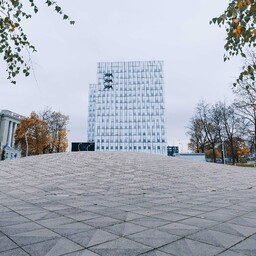Sotsiaalministeerium soovib luua
uued koostööorganisatsioonid
. Need organisatsioonid aitavad paremini pakkuda teenuseid inimestele, kes on pikaajaliste terviseprobleemidega.
uued koostööorganisatsioonid
Tõlge fraasile: uued koostööorganisatsioonid
EN
new cooperation organizations
Praegu on
sotsiaal- ja tervishoiuteenused
eraldi. See teeb inimestele raskemaks leida õigeid teenuseid. Uus süsteem aitaks raha säästa ja
teenuseid paremini korraldada
.
sotsiaal- ja tervishoiuteenused
Tõlge fraasile: sotsiaal- ja tervishoiuteenused
EN
social and healthcare services
teenuseid paremini korraldada
Tõlge fraasile: teenuseid paremini korraldada
EN
better organize services
Ministeerium ütleb, et on oluline luua uus mudel, mis ühendab
sotsiaal- ja tervishoiuteenused
. Praegu puudub koostöö nende teenuste planeerimisel ja rahastamisel.
sotsiaal- ja tervishoiuteenused
Tõlge fraasile: sotsiaal- ja tervishoiuteenused
EN
social and healthcare services
Uued organisatsioonid moodustatakse
maakondlikult
. Need hõlmavad perearste, haiglaid ja kohalikke omavalitsusi. Organisatsioonid analüüsivad piirkonna vajadusi ja teevad ettepanekuid teenuste paremaks korraldamiseks.
maakondlikult
Tõlge fraasile: maakondlikult
EN
on a county level
Organisatsioonidel oleks tööl juht, terviseedendaja ja
tervisejuhid
. Tervisejuhid aitaksid inimestel koostada
heaoluplaan
i ja jälgivad nende edenemist.
tervisejuhid
Tõlge fraasile: tervisejuhid
EN
health managers
heaoluplaan
Tõlge fraasile: heaoluplaan
EN
well-being plan
Ministeerium arvab, et tulevikus töötaks umbes 200-250 tervisejuhti. Nad töötaksid
perearstid
e juures ja aitaksid inimestel leida õigeid teenuseid.
perearstid
Tõlge fraasile: perearstid
EN
family doctors
Uus mudel aitaks riigil säästa umbes 50 miljonit eurot. Samuti väheneks erakorralise meditsiini vajadus ja sotsiaalsed rehabilitatsiooniteenused oleksid paremini kättesaadavad.
Riik rahastab muudatused
ravikindlustus
e ja sotsiaalministeeriumi
eelarve
st. Esialgu kasutatakse välisabi 14,7 miljonit eurot.
ravikindlustus
Tõlge fraasile: ravikindlustus
EN
health insurance
eelarve
Tõlge fraasile: eelarve
EN
budget
Kolme aasta pärast loodab riik, et on säästetud ligikaudu 50 miljonit eurot. Samuti väheneks tööjõukulud ja kaotaksid kulud seniste infosüsteemide ülevalpidamisele.
Eelnõu peaks jõudma
Riigikogu menetlus
se järgmise aasta esimeses pooles.
Riigikogu menetlus
Tõlge fraasile: Riigikogu menetlus
EN
Riigikogu proceedings
The Ministry of Social Affairs wants to create new collaborative organizations. These organizations will help provide better services to people with long-term health problems.
Currently, social and healthcare services are separate. This makes it harder for people to find the right services. The new system would help save money and organize services more efficiently.
The ministry says it is important to create a new model that integrates social and healthcare services. Currently, there is no cooperation in planning and funding these services.
The new organizations will be formed at the county level. They will include family doctors, hospitals, and local governments. The organizations will analyze regional needs and make proposals for better service organization.
The organizations would have a manager, a health promoter, and health guides. Health guides would help people create well-being plans and monitor their progress.
The ministry estimates that in the future, around 200-250 health guides would work. They would work alongside family doctors and help people find the right services.
The new model would help the state save about 50 million euros. It would also reduce the need for emergency medicine and make social rehabilitation services more accessible.
The state will fund the changes from health insurance and the ministry's budget. Initially, 14.7 million euros in foreign aid will be used.
In three years, the state hopes to save approximately 50 million euros. Labor costs would also decrease, and costs for maintaining existing information systems would be eliminated.
The draft is expected to reach the Riigikogu for deliberation in the first half of next year.

